
Symbiosis x Garage Naegeli
Nestled behind the gallery is the 1914 garage of Jacques Naegeli, now used as an exhibition space to house emerging artists; injecting freshness into an old niche of the promenade. Studio Naegeli invites Juliette Somnolet, an artist who also gives new life: an ode to nature’s transformational abilities.
In this exhibit, she presents us with symbiotic textures in black and white and wood.
Fallen branches, cured by water, charcoaled, sanded, given a prosthetic, to animate the piece and let it run away. The black ceramic has facets echoing the mountainous landscape: coated in local beeswax, given a natural glaze, it smells of old polished wood.
An antique barn window from le Pays d’Enhaut, is given new life through heat treatment to sublimate the wood, covered in ceramic picks migrating onto the frame, allowing poetic offshoots of a clay eco-systems trickling over the obsolete.
Found metal at the bottom of a river transformed into a monster skeleton polished back into existence. Old prints are given some snowy highlights.
In the garden hang some capers, a souvenir of a trip to Italy where the artist transposed her style to this fascinating plant.

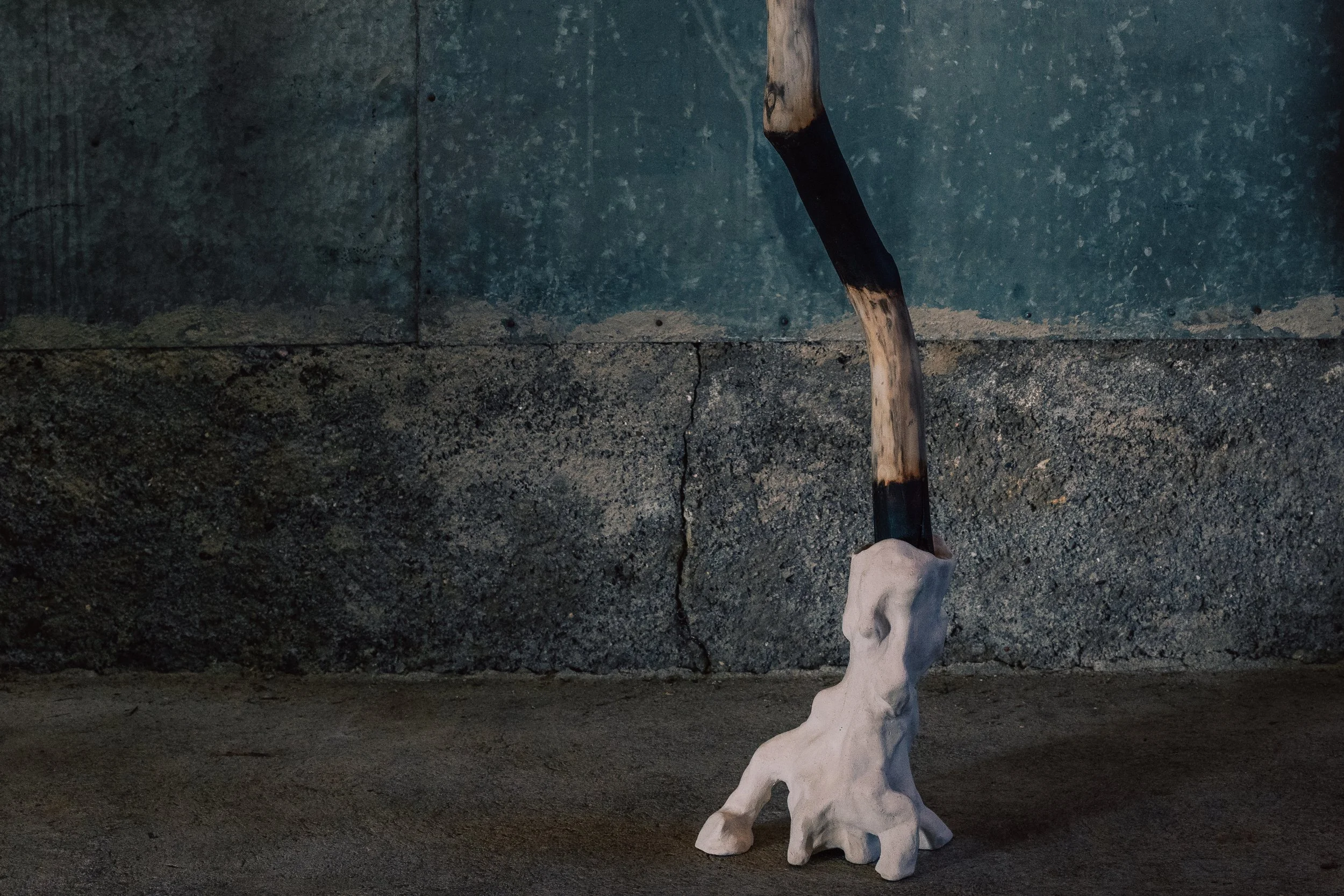
White prosthetic
The prosthetics join the latest work Juliette presented in Paris. Part of a much bigger version called ‘Droit du Sol’, a piece commissioned by the Parisian National Archives Museum. The artist invited the public to walk through 7000 leaves, all made out of raw clay, and 7m tall branches held up by ceramic bases.
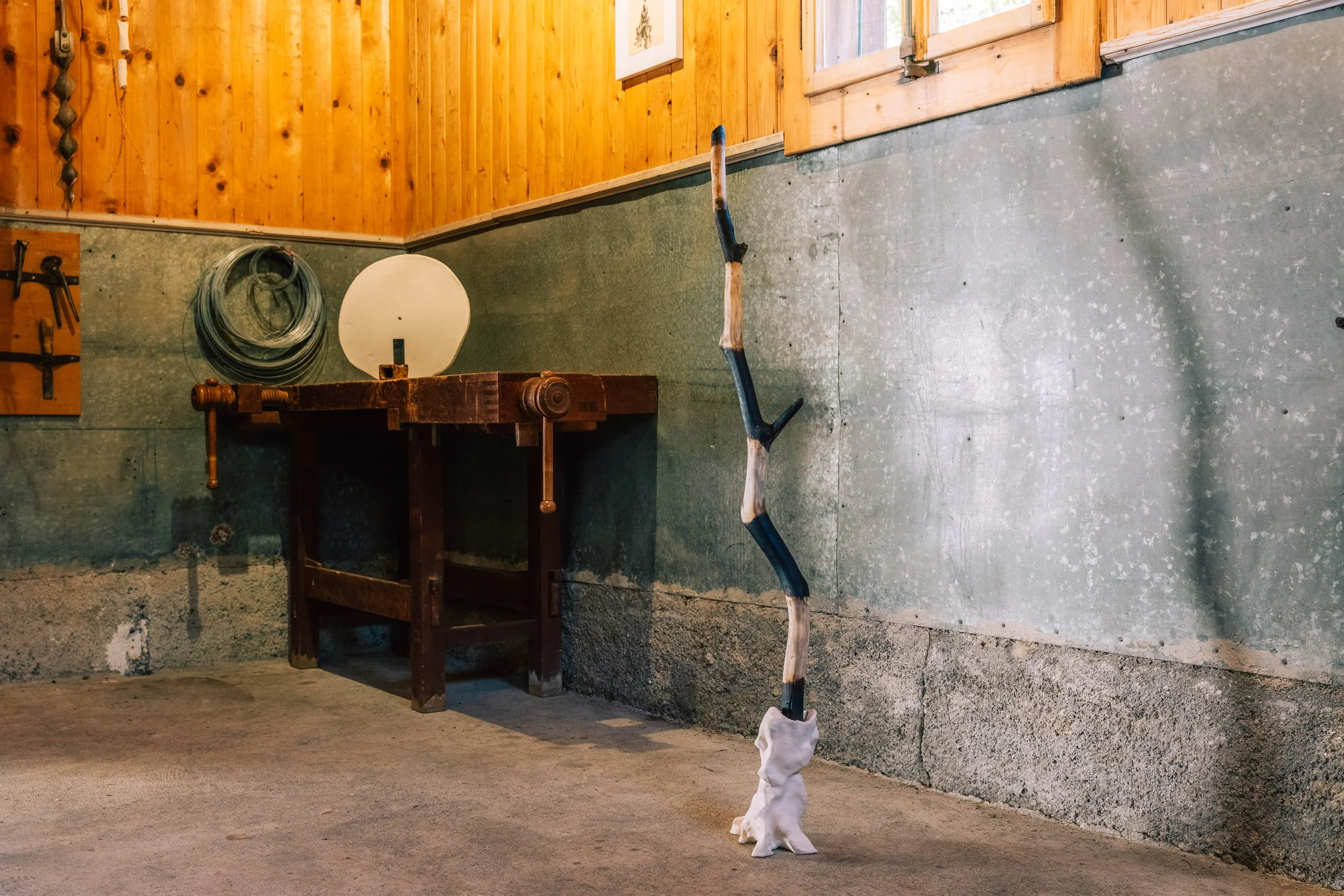
Monstre de seine
Throughout the show, bigger slivers of installations are visible such as ‘Monstre de Seine’, a 20m long ceramic installation, with a metallic backbone fished inside the Parisian river.
Juliette likes to make work modular, to make it more affordable and also more plausible for collectors that perhaps don’t have a 20m long free space. These pieces act as a record of these bigger installations.


Black prosthetic
The pieces here are explorations of future bigger installations. They are representations of important symbols found in Juliette’s work, taking old principles and materials, using ancient artisanal techniques to push objects into new directions.
Various firings are present throughout the artist’s work informed through her residencies with historical collections. She underfires ceramic, using ancient methods of beeswax sealing, or a raku simile glazing to explore how to solidify the work in a more ecological way.

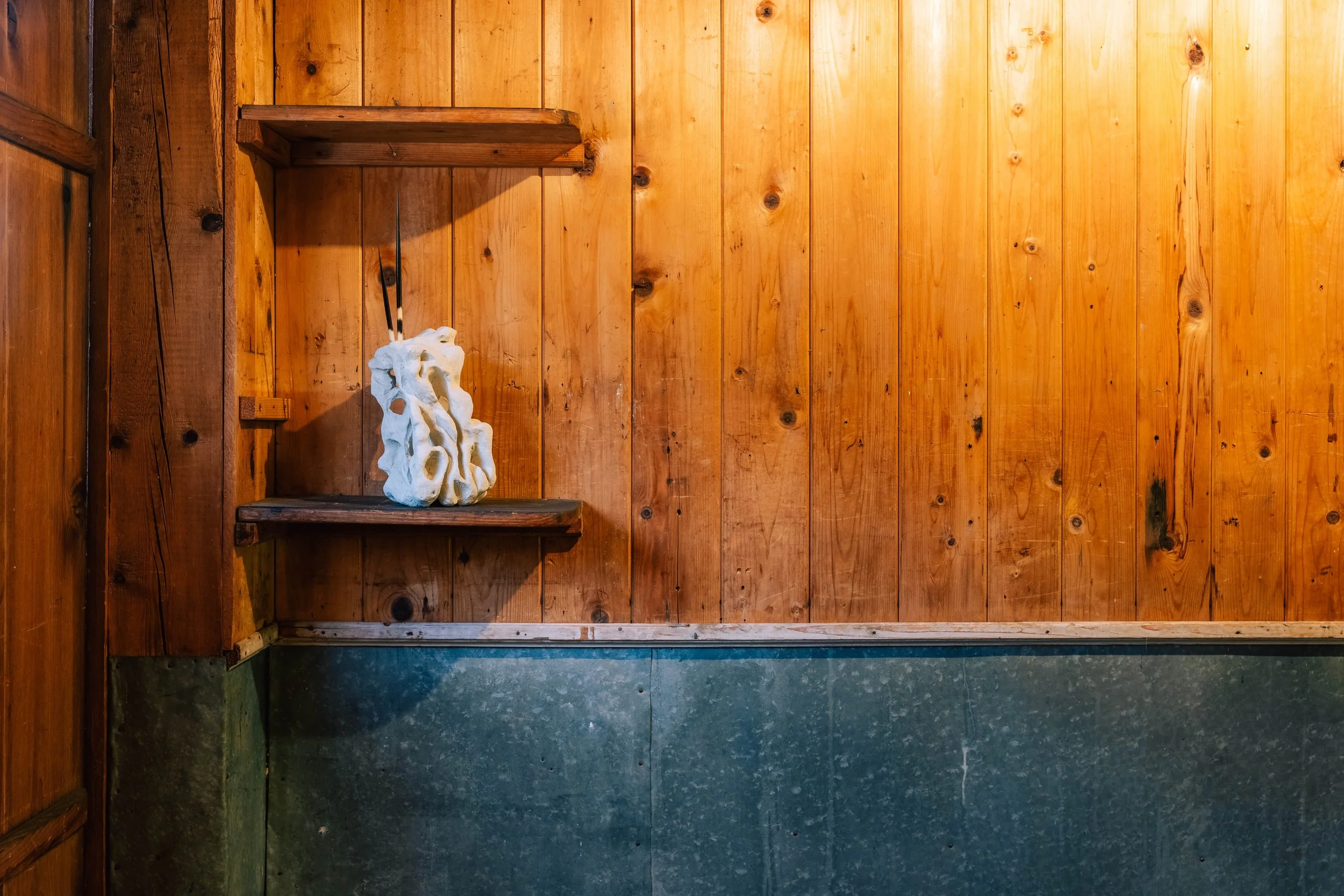
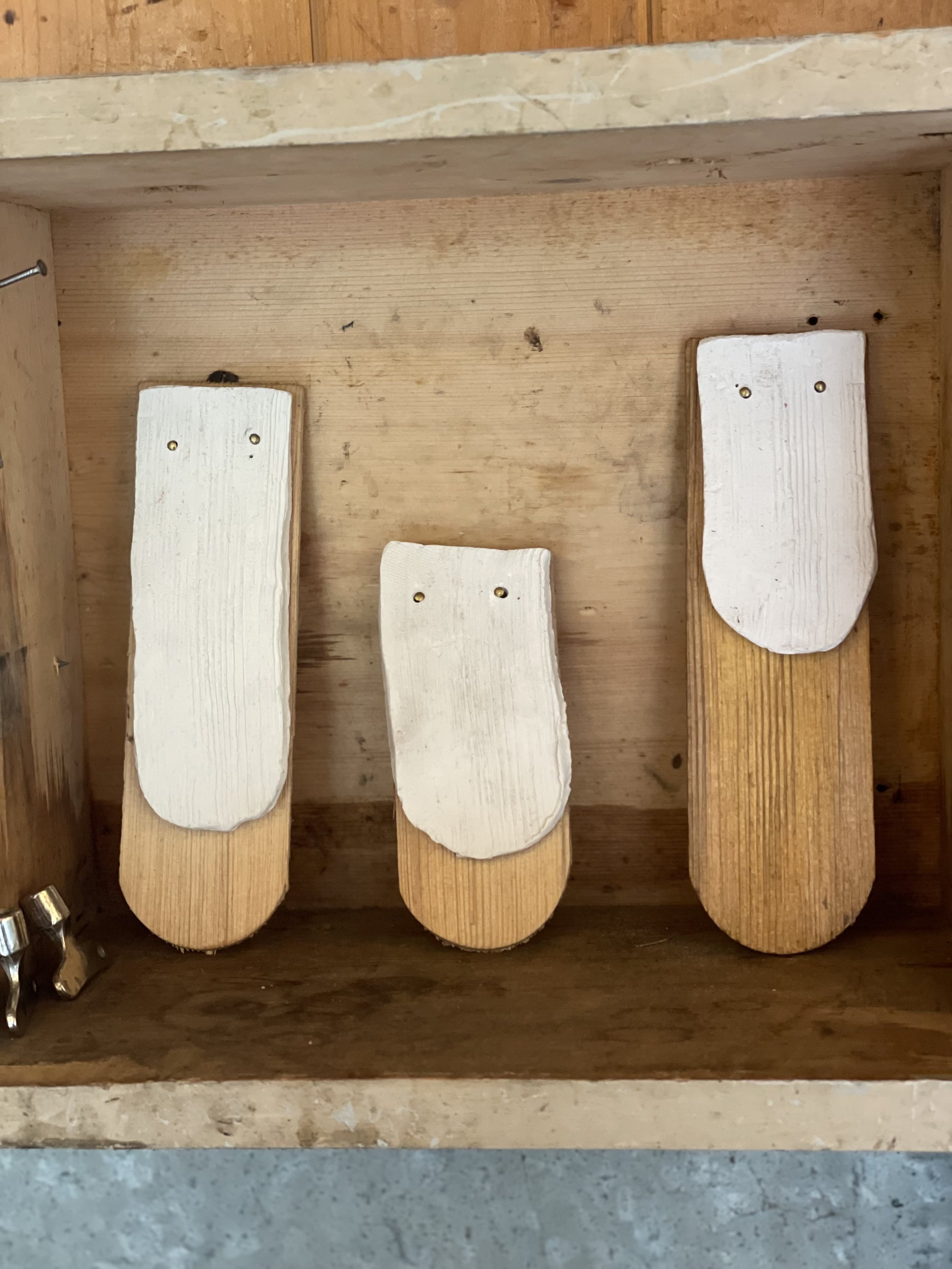
TAVILLON FAMILY
Juliette travels with her work, she moves her studio and house for each show and residency. Encouraging the discovery and utilisation of local objects and techniques in the creation of new pieces. The ‘Tavillon family’ is one of her playful loves in the show: taking its inspiration from the ‘mermaid’ chalets, covered in wooden scales, that surround the valley, they are an amalgamation of ceramic and wood with old brass nails.

BARN WINDOW
The window and the ceramic picks are an idea that came to her through the visit of caves and grotesque grottos in both France and Italy.
Initially Juliette started on sculptures that offered movement, mimicking the ever growing stalactites and water trickling upon them . Something bigger started to emerge: a sculpture offering a natural cooling effect, ‘AC picots’ will offer the visitor respite from the heat, through principles borrowed from Persian and Roman architecture, enhanced through its 19th century architectural counterparts.
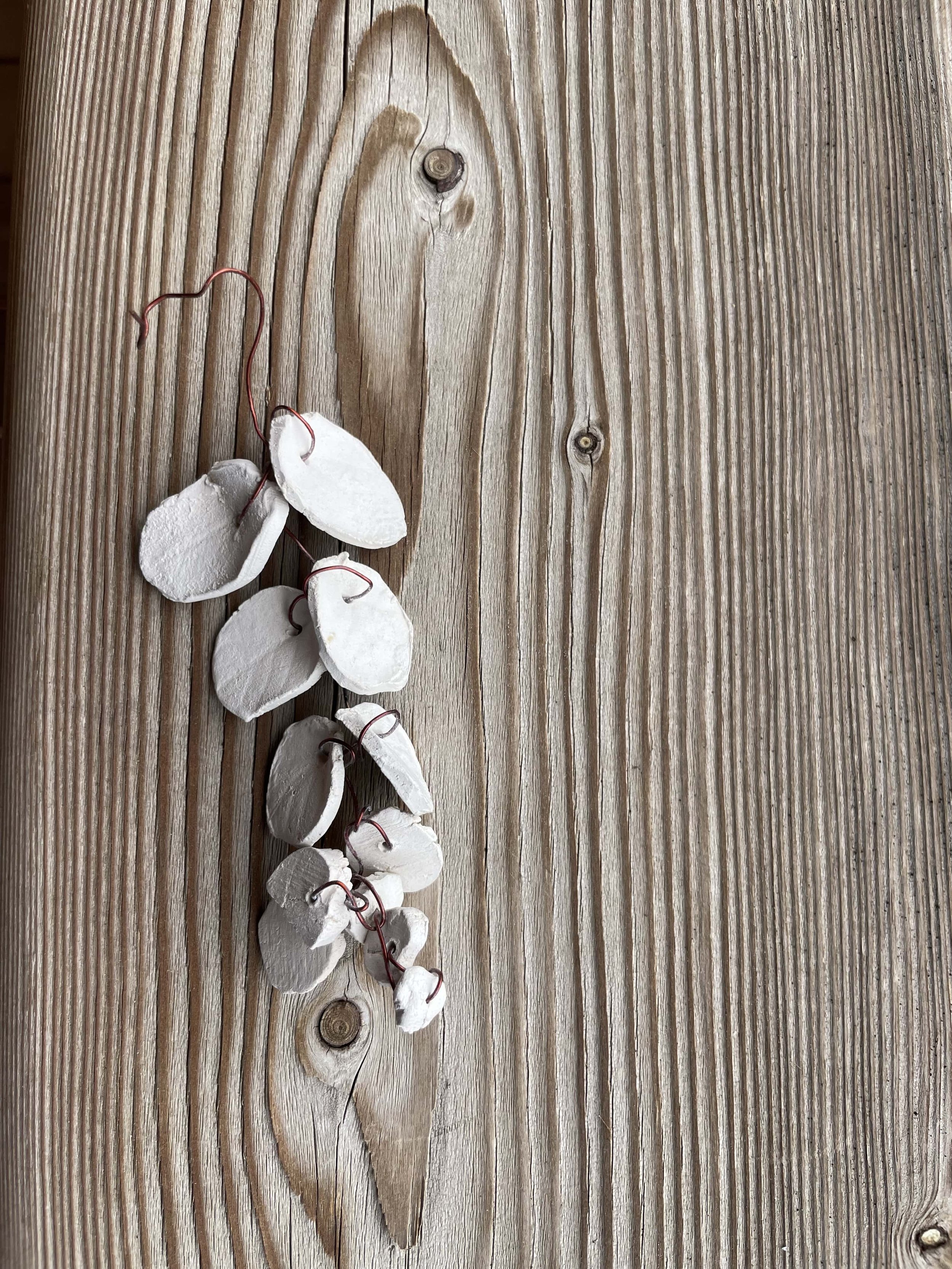
Vexed capers
The capers draped outside showcase the importance of modularity in Juliette’s work. A big piece was made for a hotel in Pantelleria, however, the little bits seen here were taken home by the artist. The copper stringing the capers come from old refrigerator motors, found on the island during her residency.
Inspired by the plant, the ‘Vexed Capers’ nature’s setting of boundaries, a plant that stops producing fruits if stepped on.



